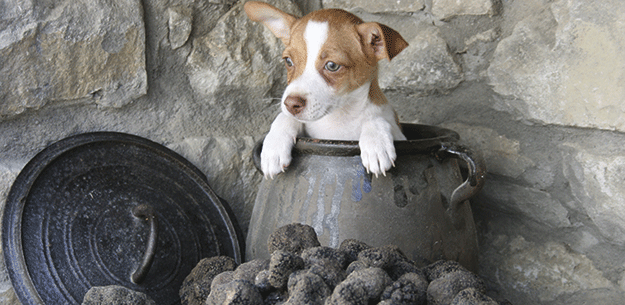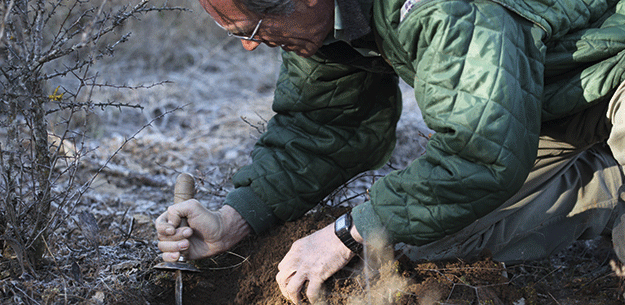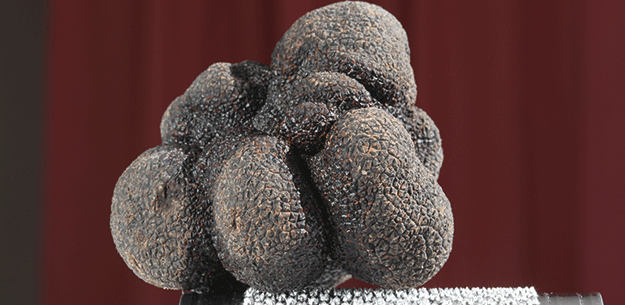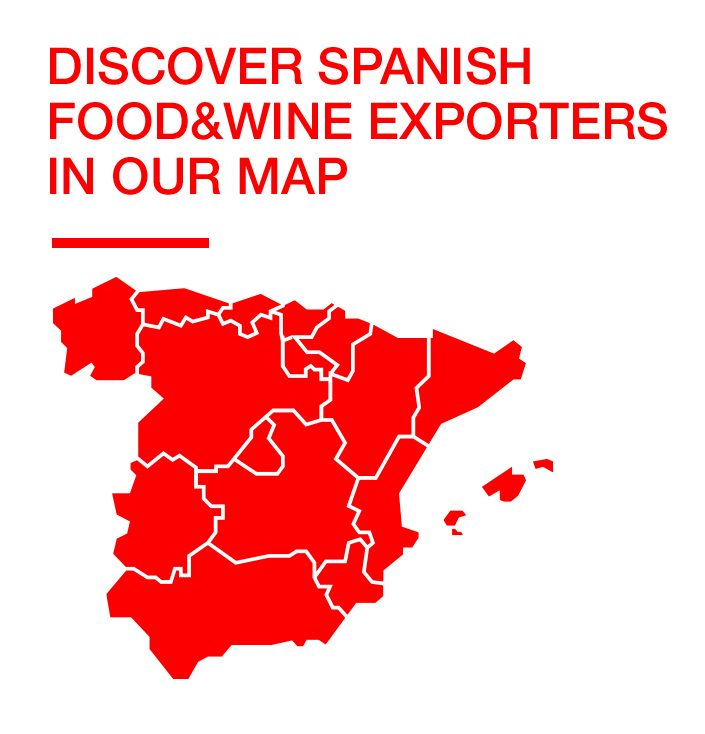
Black Truffle: A Buried Treasure
The Spanish black truffle of winter is harvested between November and March. The unmistakable, penetrating and appetizing aroma of the tuber melanosporum permeates restaurant tables, gourmet markets and the kitchens of amateur chefs.
Text: Juan Barbacil / Club de Gourmets magazine

The black truffle is one of nature's hidden gems, the discovery and enjoyment of which is reserved for just a few privileged souls. Its harvest, between November and March, requires patience, knowledge and passion, virtues that transform truffle growers into alchemists of the territory, owners of the best-kept secret.
Countless sybarites and pleasure lovers have echoed the virtues of truffles. They're considered a living gastronomical legend given their rarity and exquisite nature. Their unique flavor make this product an veritable gift for the palate, putting it at the pinnacle of haute cuisine as one of its most valuable gems.
Temperature control
A favorite food of aristocrats and kings, later an object of witchcraft, today the truffle's mysteries are unraveled in the most prestigious kitchens and biotechnology labs of leading universities located near its cultivation areas. The best national and international chefs consider the truffle the perfect ally for enlivening and aromatizing the best delicacies. The thing is that the truffle, given its condition as a hidden empress, seeks to marry not blue-blooded food products, apparently the most suitable option, but rather more humble products.
The truffle likes warmth and oil to fully project its aromatic immensity. A simple omelet can be transformed into a veritable feast when truffles are added; likewise, sunny side up eggs sprinkled with grated truffle is an unforgettable delight. A simple slice of toast with Spanish extra virgin olive oil and grated truffle at room temperature makes for a delicious bite.
Cooking with truffles entails great complexity and only the most reputable and experimented chefs are capable of extracting all of their potential. Errors to be avoided include overheating the truffle, which at 57ºC releases its ultimate flavors and aromas. Neither is it convenient to mix truffle with very strong sauces that nullify its flavor, nor use it when just taken out of the refrigerator; it must be given time to impregnate itself with the ambient temperature, which prompts it to yield its most delicate perfumes.
The generosity of the land
Aragón, the world's largest producer of the winter truffle, is a privileged territory, especially in the mountainous areas of Maestrazgo, Gúdar and Javalambre in Teruel. The markets of Sarrión, Mora de Rubielos and Morella determine the price of truffles for the whole country. Data of the Ministry of Agriculture, Food and Environment (MAGRAMA) is confusing and contradictory as regards the number of hectares of wild truffles and, furthermore, excludes private-owned plots, therefore it is impossible to know the exact volume of hectares dedicated to this cultivation.
However, we do have data for plots cultivated using the mycorrhization technique which is increasingly applied. According to Juan José Barriuso (Director of the Truffle Farming Experimentation and Research Center in Graus, Huesca), Aragón contributes 11% of the surface area dedicated to truffle cultivation worldwide (about 6,000 ha) and almost 20% of total truffle production.
It is estimated that, to date, 60% of the surface area dedicated to black truffle farming in Spain is located in Aragón (about 45% in Teruel, 10% in Huesca and 4% in the province of Zaragoza). This translates into approximately 4,500 ha in Teruel, 1,000 in Huesca and 400 in the province of Zaragoza. Annual growth continues.
The truffle grows in the Mediterranean climate of the middle or high mountain, between 700 and 1,300 m in height, and requires more than 600 mm of annual rainfall. It grows in chalky, poor, stony and loose soils: it is always found near the roots of holm, gall, kermes and Pyrenean oaks, and hazelnut and linden trees.
Interest in the truffle in these regions lies not so much in its internal consumption, which does not comprise a significant percentage of total sales, but rather in the strong demand of importing areas par excellence: Italy and France.
Applied biotechnology
According to Raimundo García del Moral, Professor of Pathological Anatomy at the University of Granada and a leading scholar on this issue, cultivation of the Spanish black truffle was possible toward the end of the 18th century when, after planting acorns, it was discovered that truffles grew on the roots of the new trees; today we know that this occurs when the fruits are contaminated by spores of the fungus.
This method resulted in such a major success that, curiously, the all-time greatest production of cultivated truffle occurred in France toward the end of the 19th century with over 1,500 tons/year, multiplying today's joint production of Italy, France and Spain by five. Currently, the general consensus is that truffle farming is a complementary activity of sustainable agriculture that is very difficult to optimize without biotechnology, given that the controlled production of mycorrhized roots requires the correct molecular selection of spores, their planting in seedbeds, and their exact laboratory-controlled verification of the tuber variety that grows. Only then may the tree be replanted to allow it to grow during 5-15 years, depending on the selected species, before the first harvest which, in the case of the oak, may be repeated up to 50 times before farming potential ends.
The flavor of the cultivated truffle
Historically, differences in aroma and flavor of different truffles from the same species were thought to be due to environmental biotic and prebiotic factors inherent to each region. Said differently, like occurs with vineyards and grapes, the terroir would determine the quality of truffles. However, the positive gastronomic features of the best truffles with each passing day are increasingly related with the existence of a geographically distributed diversity of genetic variations (as is the case with the susceptibility to certain illnesses of certain human populations). This fact is paving the way toward the selection of the best truffle samples for cultivation, depending on depending on the presence or absence of these genetic polymorphisms, for which molecular genetics has become essential, given the scarce and tedious results that traditional genetics provide during this process.
Finally, we would like to highlight a curious fact contributed by Domingo Blanco, Doctor of Veterinary Medicine and Professor of the Foods of Plant Origin Research Group at the Faculty of Veterinary Medicine of the University of Zaragoza, which has been performing research for many years on fungi in general and on the truffle in particular; just like ultrasound is used for cleaning jewelry, it is already being used with truffles for the same purpose and for sanitization.
Article originally published in the Club de Gourmets magazine (Spanish). Translation by Lionbridge /@ICEX. Photos by: Juan Barbacil
The unmistakable, penetrating and appetizing aroma of the Spanish tuber melanosporum permeates restaurant tables, gourmet markets and the kitchens of amateur chefs.
Juan Barbacil / Club de Gourmets magazine



- image1
- image2
- image3




